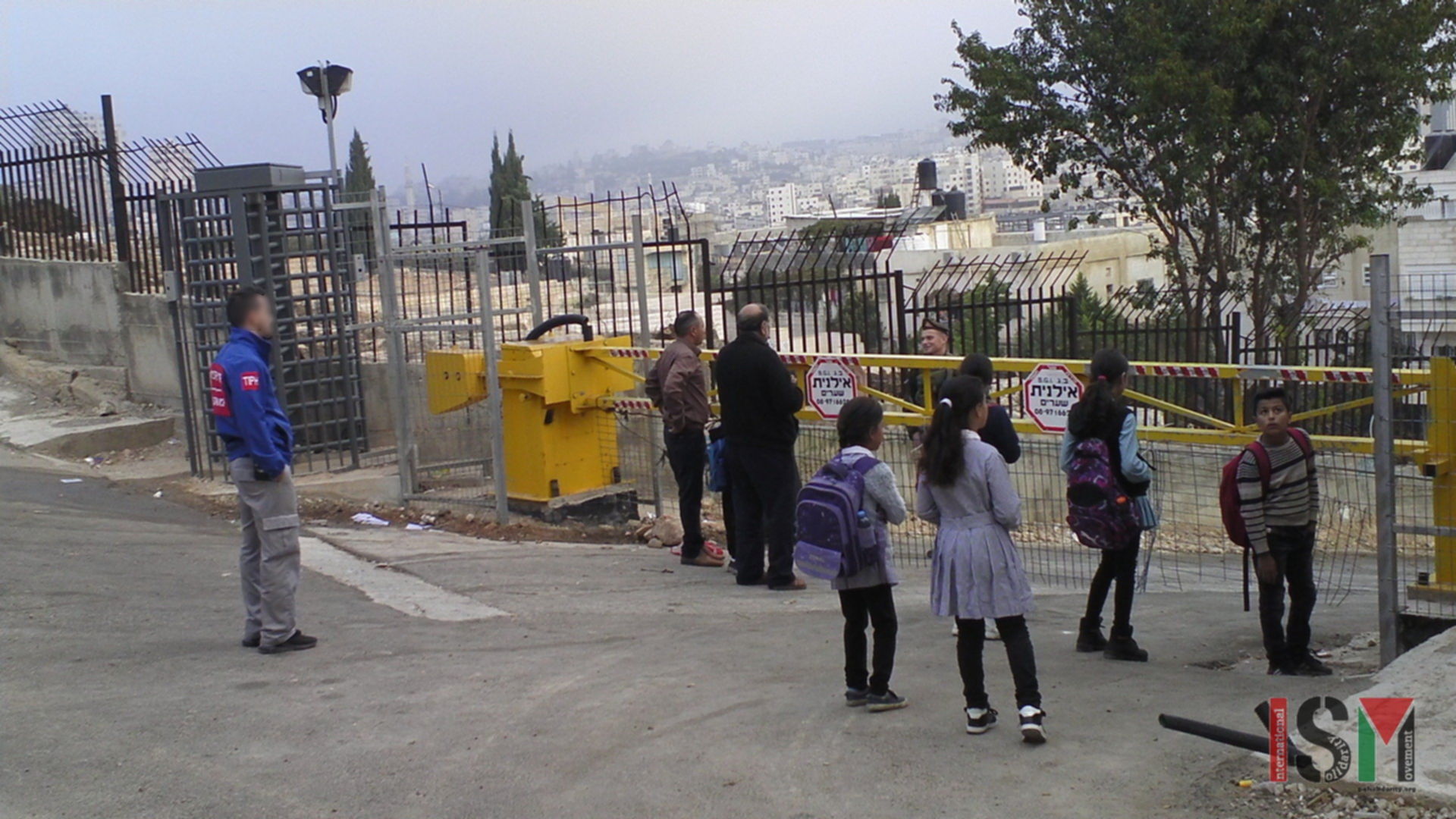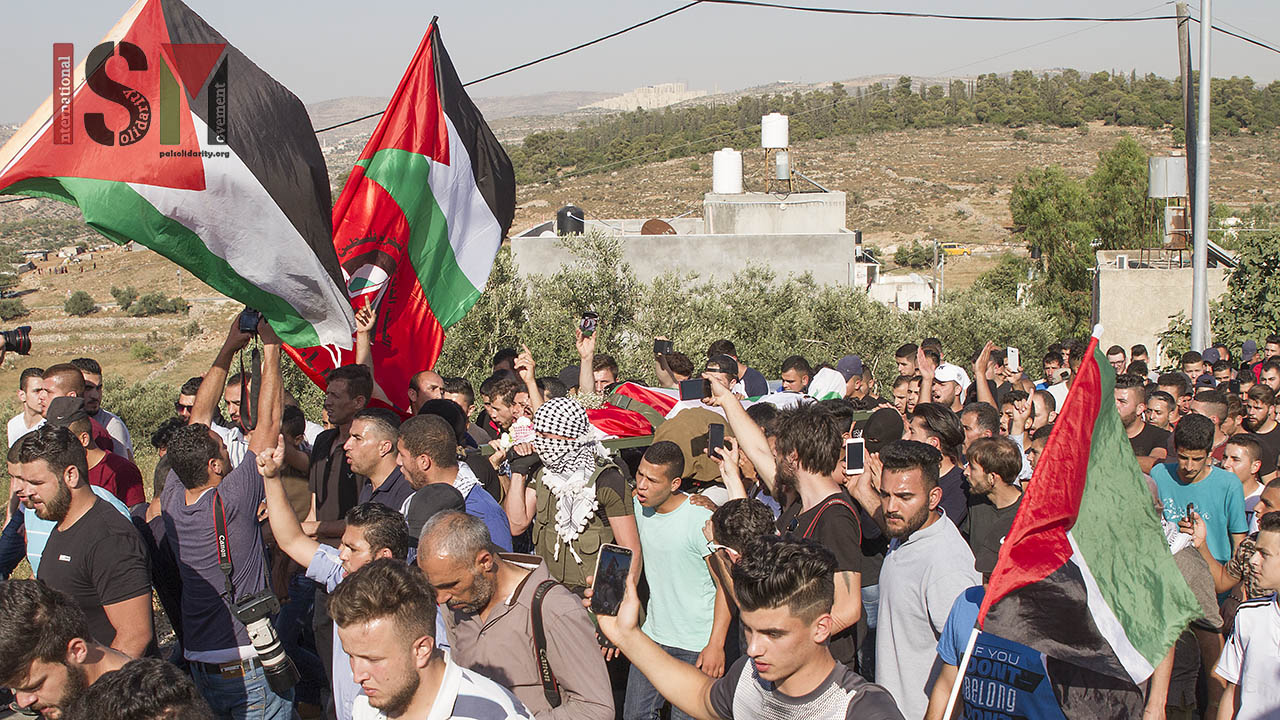Tag: Checkpoint
-
Residents and schoolchildren blocked at the Tel Rumeida checkpoint for 30 minutes
21st October 2018 | International Solidarity Movement, Al-Khalil Team | Hebron, occupied Palestine This morning, schoolchildren and other passers-by encountered the Eastern Tel Rumeida checkpoint blocked in both directions and had to wait 30 minute to pass it on their way to school or workplace, while a young man was detained inside for 30 minutes.…
-
Residents of Tel Rumeida participate in two sit-ins at checkpoints to demonstrate against increased harrassment in the area
23rd June 2018 | International Solidarity Movement, Al-Khalil Team | Hebron, occupied Palestine On Thursday the 21st of June, a group of around a hundred Palestinian residents of Tel Rumeida gathered at the checkpoint outside of the Jabal Al Rahma mosque to protest against the constant delays, harassment and humiliation that happen in the area. A…
-
Funeral held in Nabi Saleh for Izz al-Deen Tamimi, shot dead by Israeli soldiers
The funeral of 21 year old Izz al-Deen Tamimi was held yesterday afternoon on Wednesday 6th June in Nabi Saleh, a village north of Ramallah. Israeli soldiers shot the young man with three live bullets in the early morning, hitting his neck and chest. Israeli undercover agents and soldiers had entered the neighbouring village…



